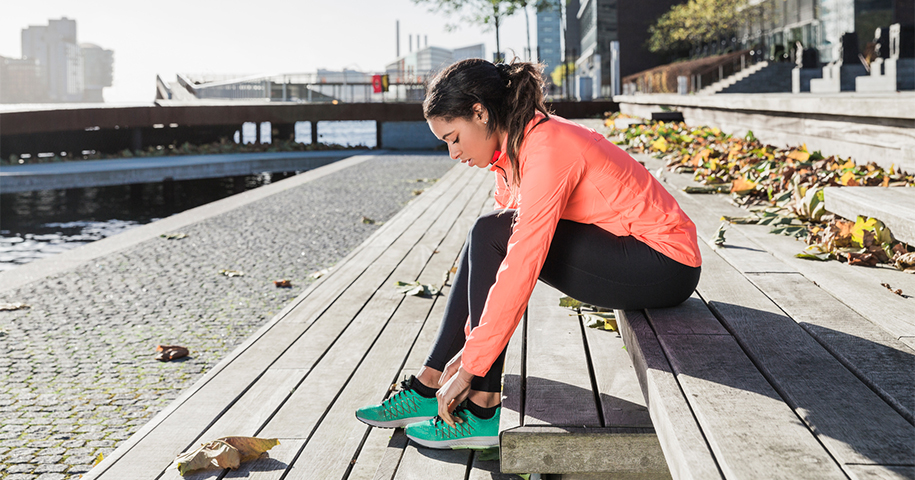Little ruins a run faster than some unexpected moisture. And we don’t mean rain.
As an almost-49-year-old wanting to qualify for the Boston Marathon this year, I’m looking at a whole lot of miles on my feet in 2017. So when this topic came up in a team Gennev brainstorming session, I jumped. Here’s why:
According to Runners’ World, as many as 40 percent of female runners likely suffer from leaking urine.
But I’m healthy! You cry. Why me??? (Believe me, I’m right there with you, gal.)
Running is a high-impact sport
Running is a great way to stay fit. It’s also a high-impact exercise: you hit the ground with a force equal to several times your body weight with each foot strike.
There’s been lots of research into how that pounding affects our knees and feet, but for women in particular, the impact has other, well, impacts. That’s a lot of pressure being exerted downwards on your pelvic floor—the network of muscles and ligaments that support your bowel, bladder, and uterus.
According to Physiotherapist Michelle Kenway, if those muscles aren’t fit and strong, running can stretch and weaken them further, and argh! The Dreaded Shpritz.
A weak pelvic floor can cause incontinence when running
Pelvic floor weakness is very common among women generally. Menopause, pregnancy and vaginal births, hysterectomy, obesity: all of these can cause the muscles to weaken and make it harder to control our bodies’ elimination of waste.
And when pelvic muscles lose strength, not only do you increase your chances of misting your shorts, you also lose some of the deep core strength that makes you a stronger, more injury-resistant runner.
A strong pelvic floor can make you a better runner
Happily, strengthening your pelvic floor brings some serious benefits. You can:
Improve your running. Your pelvic floor is at the deepest part of your core and helps stabilize your body in motion. A strong core helps you maintain proper form, which makes it easier for you to engage all the necessary muscles to propel you forward. Stronger, more efficient, less prone to hip, knee, and back injury—sounds good to me!
Prevent incontinence and prolapse. Along with urinary incontinence, someone with pelvic floor weakness can also suffer fecal incontinence (leaking stools), and pelvic organ prolapse. Prolapse is when a pelvic organ such as the bladder droops and even descends into the vaginal canal or anus. Strengthening pelvic muscles can prevent and may even reverse pelvic prolapse.
Enjoy better sex. According to Women’s Health magazine, strengthening vaginal muscles (which are part of the whole pelvic floor network) can increase pleasure and the possibility of reaching orgasm during intercourse. So, you know—bonus.
Exercises for a strong pelvic floor
Kegels are a common way to strengthen the pelvic floor by squeezing and relaxing the vaginal muscles. If you’ve ever had to interrupt your pee mid-stream, those are the muscles you’re targeting. Contract and hold ’em for a count of 5, then relax. Repeat. Try to get up to 10 sets, a few times a day.
You can also get some very cool smart devices for kegel exercises. These help you target the right muscles and work them correctly by providing feedback to your phone or tablet. Our CEO, Jill, uses the Elvie Kegel and has seen real progress with it. Or you may prefer a non-tech solution such as the Stone Exercise Egg or wearable Kegel balls. With any inserted device, you’ll want to use a non-silicone, water-based lubricant.
If pelvic floor problems persist, or if you experience pelvic pain, please, consult a medical professional.
The information on the Gennev site is never meant to replace the care of a qualified medical professional. Hormonal shifts throughout menopause can prompt a lot of changes in your body, and simply assuming something is “just menopause” can leave you vulnerable to other possible causes. Always consult with your physician or schedule an appointment with one of Gennev’s telemedicine doctors before beginning any new treatment or therapy.
